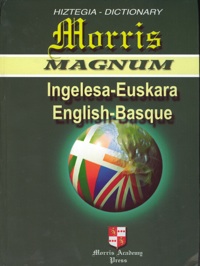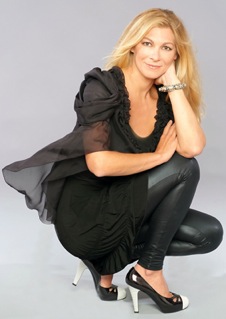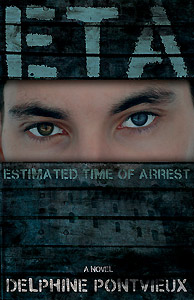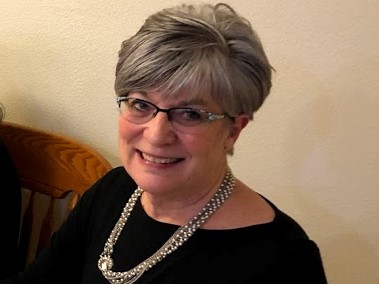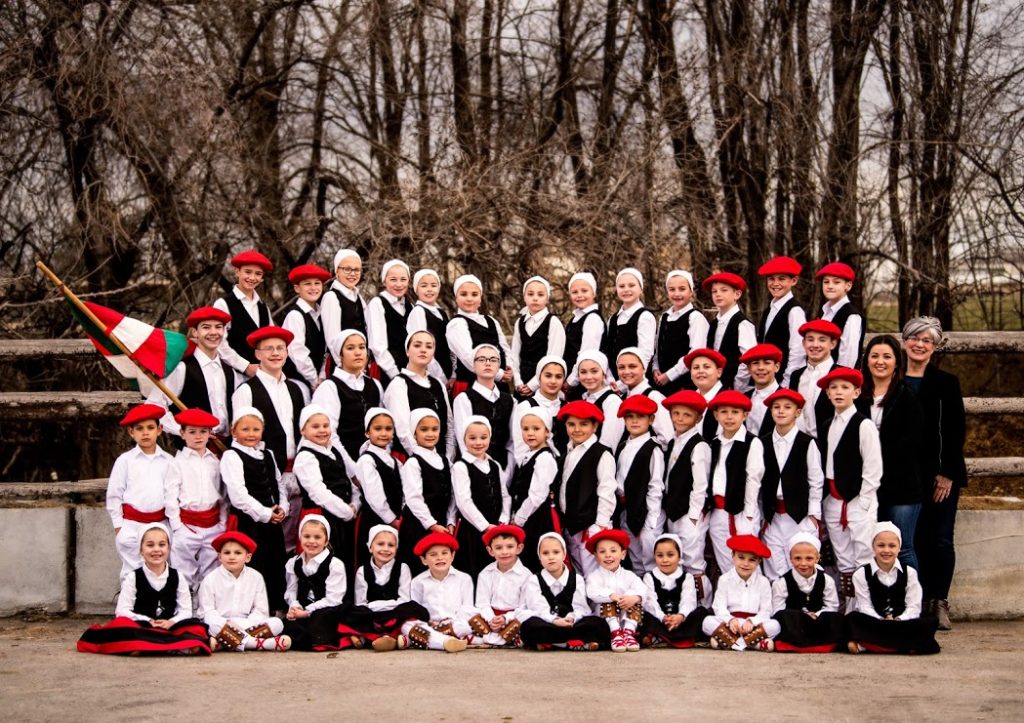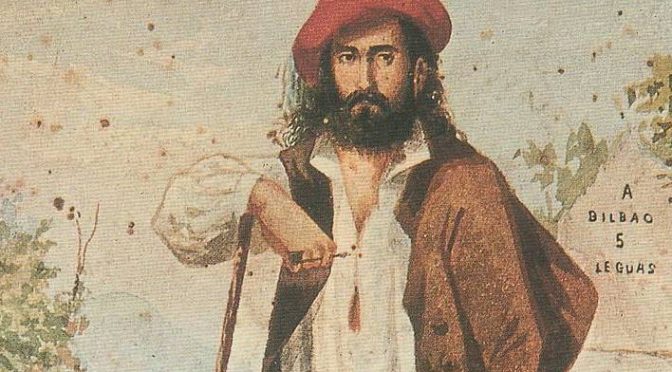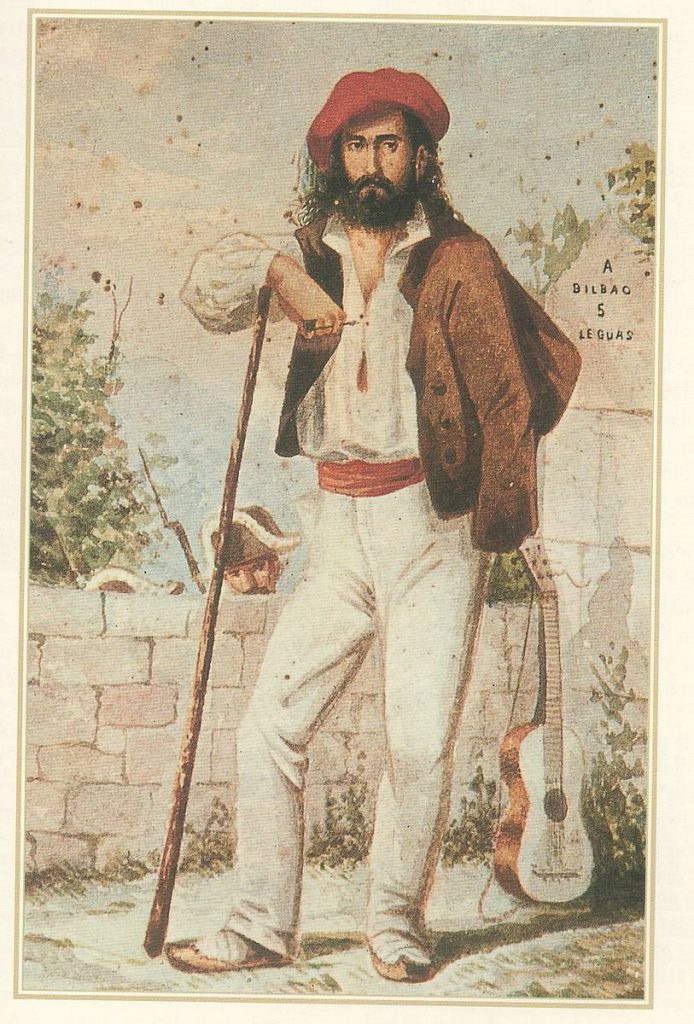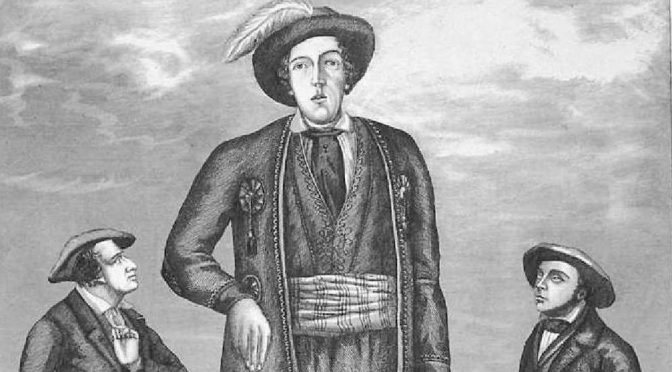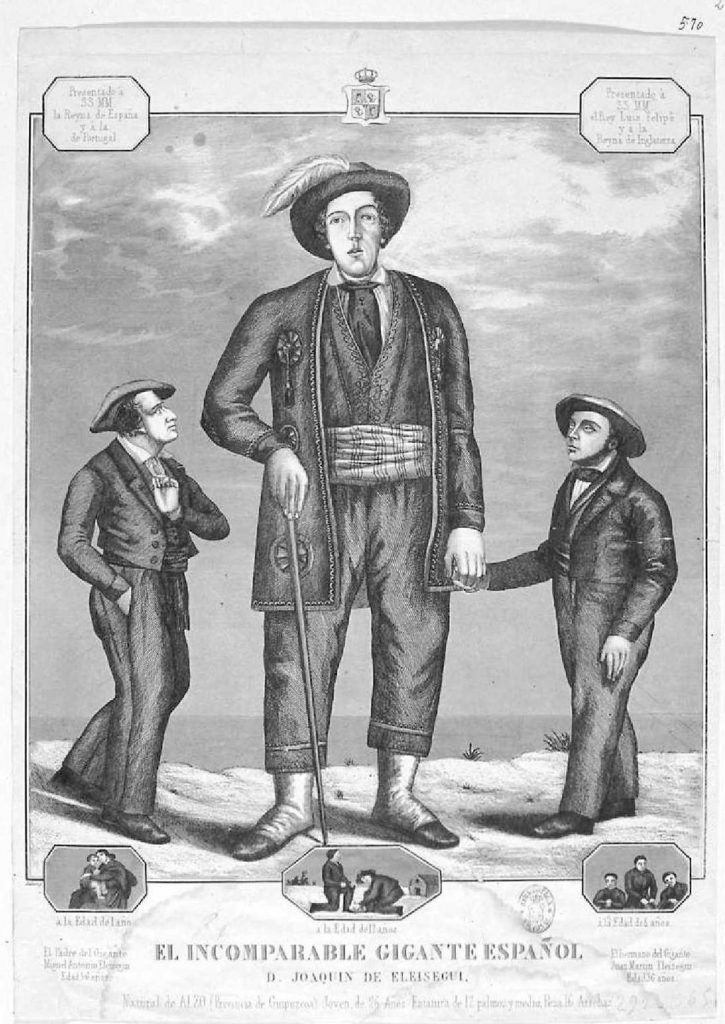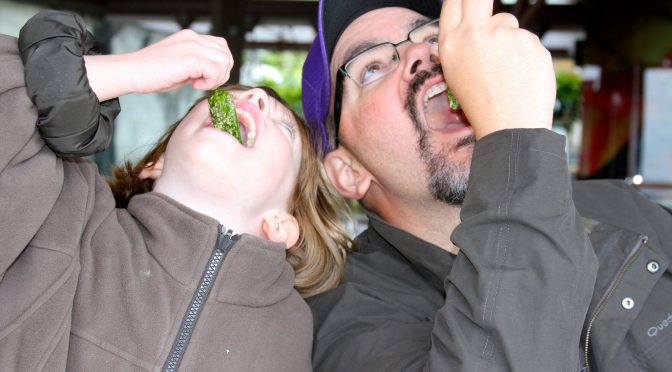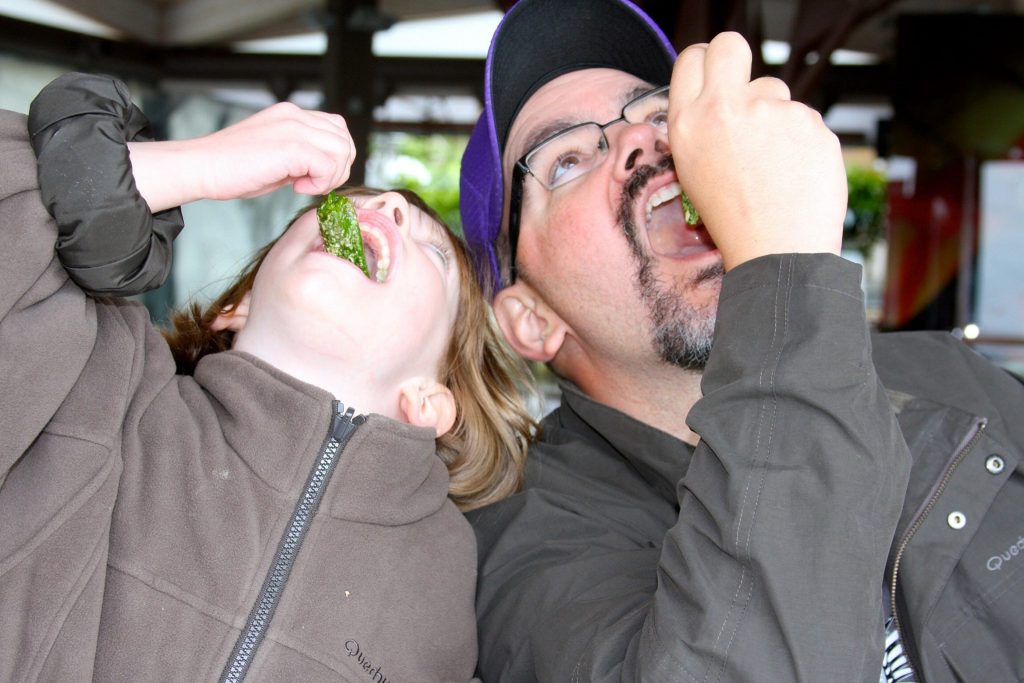Conducted in Summer/Fall 2008
Mikel Morris, an American with dual US/Spanish nationality living in Zarautz, Spain, has written the definitive Basque-English dictionary and is currently working on the Morris Magnum which promises to be the largest bilingual Basque dictionary in existence.
In this first part of a multi-part interview, Mikel shares his thoughts and hard-hitting observations on the status of the Basque language, the efforts the Basque government is making to promote Euskara, and his own tribulations in getting his dictionary published.
A follow-up to this interview is forthcoming.
Buber’s Basque Page: To begin with, could you tell us a little about your background? Where are you from? Where did your passion for the Basque language originate?
Mikel Morris: It is rather hard to say where I am from. I was born in Colorado but I lived in Angola (Portuguese West Africa) during the key years of 10, 11, 12. In Angola, I went to a British school and was forced to learn Portuguese at home since our servants spoke no English. At my school, I learnt quite a bit of Afrikaans and some French as well. That essentially launched my interest in languages.
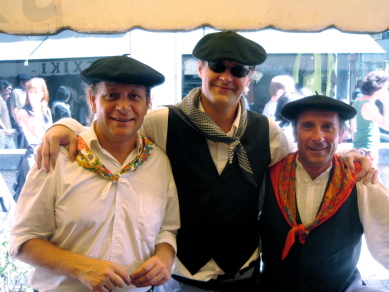
After Angola, my family moved to Jackson, Mississippi of all places but thankfully my father got transferred to Colorado and I spent the rest of my Junior and High School years in beautiful Colorado.
In the summer of 1975, the last year of Patxi, a.k.a. Francisco Franco, I went with my Spanish teacher to Pamplona-Iruñea to learn Spanish or, in my case, to tone down my Portuguese in my Spanish. To this day, despite some 25 years in this country, Portuguese is still far easier for me to speak than Spanish since I learnt Portuguese in my childhood, Spanish later on.
Mikel Morris is an American and Spanish citizen who has lived in Colorado, Mississippi, Oklahoma, Angola, and the Basque Country, where he has lived since 1979. In 1988, he founded the Morris Academy, in Zarautz, an English school and publishing house. With degrees in International Relations and Hispanic and General Linguistics, his passion for languages is evident.
Mikel has written the definitive Basque-English dictionary, a project that took 19 years to complete the first edition. While Mikel has taken on new projects, developing dictionaries for both Thai and Chinese, he also continues to develop his Basque-English dictionary, with the Morris Magnum in the works. This dictionary will be the largest bilingual Basque dictionary in existence.
It was there, in Navarre, that I came across Basque. I knew that it existed, mostly thanks to a movie in which Basques leapt around from rock to rock like mountain goats, belting out irrintzis and wasting Indians attacking them. I stayed with a Basque nationalist family when I was learning Spanish in Pamplona-Iruñea. One day, I visited Lekunberri and heard Basque for the first time. I was taken back for various reasons. For one thing, I had thought that Basque had essentially died out and found that it was very much alive. For another, I was amazed at all the Spanish words, many of which were swear words, that they used and yet, I could not make anything out other than those cuss words. Indeed, in those days, I could not tell the difference between Basque and Spanish other than I understand nothing of Basque and quite a bit of the Spanish. Nevertheless, it all sounded the same to me. When I used some Basques, I was lionized and praised to no end. I was even invited to a few drinks and a few dinners as well. I got to know about the plight of the Basques and Franco’s cruel oppression of them.
I managed to graduate from college in three years and I was determined to do something interesting during my “free” year. I decided that it would be learning Basque.
I came back to the Basque Country on December 31, 1978. In those days, there were no euskaltegis per se and the only places were “gau eskolak” with primitive textbooks. There were no Basque newspapers or Basque television. The only radio that I could listen in Basque was the rosary in Basque and a few programs for baserritar types. I was especially frustrated by the lack of good dictionaries, especially English-Basque dictionaries. For instance, when someone told me “ezkurra”, I could not understand. They provided me the Spanish word, “bellota” but that was equally incomprehensible. I had to look in a couple dictionaries before I could figure out that “ezkurra” meant “acorn”.
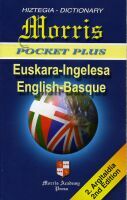
One day, in discussing the problem with somebody, I mentioned that someone should do a Basque-English dictionary. His reply was, why don’t you do it? I answered that I did not know how to write a dictionary. His retort stunned me: Who knows how to make a dictionary here? You could be as good as anyone else, if not better. I started on it the day after that conversation, on March 15, 1979. That first step plunged me headlong into Basque lexicography, Basque linguistics, Basque philology, Basque culture, and even Basque politics. I hoped to have the dictionary done in a year or two. Little did I know that it would be a 19 year odyssey.
BBP: You have a unique perspective in that you are a foreigner who has integrated himself into Basque society. What kind of changes have you seen in the use of the Basque language, both in the general population and the society as a whole?
Mikel Morris: I have seen huge changes in Basque and, indeed, in the use of Basque since I started living in the Basque Country on a continuous basis since December, 1978.
When I first came to the Basque Country in 1975, Basque seemed to be on the way out. Few people born around the late fifties and early sixties seemed to speak it very well save for rural town dwellers, peasants, or fishermen. Hardly anyone could actually write it very well, due to a myriad of historical and political reasons.
In 1978, relatively few people were educated in Basque in the southern Basque Country. Certainly less than 10%. Most were educated in Spanish only. Euskara Batua was around but known by very few people. I remember the Basque Nationalist Party using h-less Basque dialects in their election campaigns. Only the left-wing Basque parties seemed to use Basque with the letter h. There was no Basque on TV and Basque had a very token presence on the radio (mostly religious programs).
Spaniards living in the Basque Country told me that Basque was primitive and wholly incapable of expressing anything beyond the ken of simple-minded hicks. When shown an article about nuclear physics in Basque, their usual retort was “that’s Batua”, not real Basque.
Teaching of Basque was in its infancy and the methods for learning it were extremely bad if not misleading. I remember the textbook Euskalduntzen and Xabier Gereño’s Basque method as amazingly bad. There were no real euskaltegis (Basque language schools), just gaueskolak (night schools). Immigrants rarely learnt Basque and there were many cases of Basques who never learnt Basque from their parents and grandparents.
I would say that the watershed for Basque was the establishment of Euskal Telebista and the gradual increase of Basque-medium education which continued throughout the eighties. By the turn of the millennium, most Basque children were either in Basque or Spanish-Basque medium schools. Spanish-only schools have declined remarkably throughout the Basque Autonomous Community and have practically disappeared in Gipuzkoa.
I do think that it was by sheer luck that Batua came about in 1968 because had it happened in the 1980’s, there would have been a PNV Batua, HB Batua, PSOE Batua, AP (and later PP) Batua, etc. I also think that pro-Basque policies were implemented by Basque politicians who really didn’t believe in the language. I have been told that many have been quite surprised by Basque’s success.
Nevertheless, there are still important challenges for Basque.
One challenge is that I sincerely believe that most Basques, despite their futile protestations to the contrary, do not take their own language seriously. They wax lyrical about its ancient roots, its unique status as a language isolate (i.e. being unrelated to any other language in the world), and its tenacity to survive. However, many or most of them seem to suffer from a kind of inferiority complex. They are very aware that many people do not actually speak the language, even within towns where Basque is a majority language. They are quite happy to have a party or march or walkathon in favor of Basque but are certainly less inclined to read a novel in Basque, original or translation.
Many have told me that they would never write a serious article in Basque because very few people would actually read it. Indeed, even the Royal Academy of the Basque Academy, Euskaltzaindia, uses Spanish, and sometimes French, as the “metalanguage” (i.e. language used in giving definitions and for commentaries) of its huge Orotariko dictionary. The original compiler, Koldo Mitxelena, used Spanish because he said that few Basques could actually read Basque when he started it. Even the man that took over, Ibon Sarasola, once pointed out he would not change a thing and would continue to use Spanish even if he started to compile the Orotariko dictionary again. One reason was so that outsiders could use it. No one dared call him out on that… except for me. I wrote to Berria that if the project were in my hands, I would have no hesitation in having Basque as the “metalanguage”. I pointed out that small languages such as Icelandic and Estonian had similar dictionaries with their own language as a metalanguage. Why not Basque? Is Basque really a serious language? Mr. Sarasola provided no answer. There is no serious debate here and I am one of the few who speaks their mind about contradictions regarding Basque.
Another challenge is that Basque still has to find its way in the modern world. It is an “orphan” language in that it is unrelated to any other language in the world. Catalan and Galician have been able to develop quickly because they are simply variants of Latin and Latin languages are fairly well-developed. Most Basque think-tanks (e.g. Elhuyar and UZEI) have Spanish as the main language to copy and imitate. That is because, quite simply, most of those working (there are some notable exceptions) in those places have little knowledge of other languages other than Spanish (or sometimes French). Spanish, in effect, is usually the only model that they take into account. Elhuyar and UZEI are usually quite out of their league when it comes to looking towards other languages. I have always called for think-tanks to look at English, German, Russian, Japanese and Chinese as alternative models. Indeed, Finnish, Estonian, Hungarian, and even Turkish or Georgian deserve to be taken into consideration on account of the structure of these well-developed languages which are often rather similar to aspects of Basque structures and word formation. However, Spanish-centric Basque think-tanks are spectacularly not up to the task. A shame.
In short, the very world outlook for Basque being developed by the likes of Elhuyar is often little more than a find-and-replace procedure of replacing a Spanish “ca” with a Basque “ka”, a Spanish “rsa” with a Basque “rtsa”, etc. . One obvious example is with ancient proper names of mythology and historical names. All they do is get a Spanish form and make it “Basque” (etxekotu as they call it) by Basquising the spelling. Thus, Caligula is Kaligula since they take Spanish “Calígula” as the starting point, remove the accent and replace the “c” with the “k”. They even go as far as changing easily pronounced names such as Scipio and come up with “Eszipion”, which is the Basque version of “Escipión”. For them it is of no importance if Basques from Iparralde use euspañol forms or not. They also provide hugely complicated tables to justify their “euspañol” fudging. They are not intellectually honest enough to admit that they are just Basquising Spanish forms. The Basque masses look on with great indifference because they don’t really read in Basque anyway, even those who have gone to Basque-medium schools and most think that “Kinto Kurtzio” (Quintus Curtius) is rather ugly if not over the top. Many of them think that “Mahoma” is very acceptable for the prophet of Islam even though no one in Iparralde uses the Spanish word.
Basque also has to be seen to be able to be a cool language, a language that can express things in slang that teenagers can identify with. Up to now, they only use Spanish slang. Most jokes seem to be told in Spanish, not Basque, even in heavily Basque towns. That seems to me that it is a case of a failure of using Basque in creative ways. Perhaps because the children watch a lot of Spanish media. No, Basques do not know Basque like Swedes know Swedish. Very few know how to say “aircraft carrier” or “knuckles” in Basque, even children educated in Basque-medium schools in towns like Azpeitia can’t. I gave talks to a Dutch and Basque audience, in English, to illustrate the point of diglossia (unequal bilingualism). Absolutely all of the Dutch could say “aircraft carrier”, “knuckles”, and “caterpillar” in their language while absolutely none of the Basques could (but most knew the Spanish word, hmmmm).
Basque has to widen its scope and be included in the daily life of Basques. Although Basque nationalists have a majority in the Basque Parliament, Basque is not used in proportion to that number of deputies (indeed, many abertzales cannot even speak Basque). Basque also needs to be used at the workplace.
Basque dubbing of movies is so bad and so blatantly artificial, there is hardly a demand for it save for children’s programs. They will never improve the quality because they are unable to figure out what good Basque is (dubbed Basque eschews contractions, skirts any hint of dialect, and has a distinct overriding Spanish monotone accent). Perhaps they should take the Scandinavian route and use the original version and use Basque subtitles but I doubt that will happen in the near future.
Finally, Basque has to be seen as something that belongs to everyone regardless of ethnicity or political ideology. There are encouraging signs: there are lots of children who are Black, Brown, or Yellow who speak perfect Basque. Many immigrants, at least in towns with large Basque-speaking populations, learn Basque and often use it more and better than Rh negative types. However, the fact of the matter is, and no one really talks about this in the Basque Country, much of “Euskalgintza” (Basque media and cultural movement), rightly or wrongly, is conceived by many people as a front for left-wing radicals. There are some publications, e.g. Aldaketa 16, that are obviously not controlled by the Basque Left (Aldaketa 16 is run by a well-known PSOE sympathizer, Gorka Landaburu). However, such media seems to be completely ignored by other Basque media. That is a shame and I hope that it changes.
BBP: You have written, what seems to me, the definitive Basque-English dictionary. Can you tell us about how you got started with the dictionary? What motivated you to take on such an ambitious project? What kinds of struggles did you have? And, were there any surprises along the way?
Mikel Morris: I learnt Basque in an ikastola, believe it or not. I came knocking on the doors of the Benedictine monks in Lazkao in January 1979. I was informed that since I was not present in October, I could not be in the course. They did let me rent a flat of theirs for a very cheap price. Through a friend of a friend of a friend, I was at the Beasain Alkatasuna Lizeoa, learning Basque in the teachers’ room. I was extremely frustrated by the lack of materials at hand to learn Basque. The only textbooks around, for Batua anyway, were Euskalduntzenor Euskara, Hire Laguna. 1979 was a very confusing time to learn Basque. Only 4 four years after the death of Franco, the Basque language was waking up from a deep slumber of 40 years of often violent suppression and millennia of neglect.
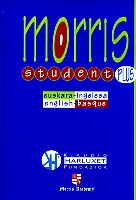
Yes, it was devilishly hard to learn Basque in 1979. There was no ETB, little Basque on the radio, no Egunkaria (or Berria), the ikastola movement was just beginning and D-eredua non-existent. I was learning Batua while everybody in the street, in Beasain, was using Goierri Gipuzkoan … in “hika” (a very intricate way of familiar speech). When I asked what a Basque word was, e.g. ezkurra, I was told “bellota”. The problem was that “bellota” meant the same to me as “ezkurra”, i.e. nothing. Thus, to find out how to say a word in Basque, I had to look in an English-Spanish dictionary and then in a Spanish-Basque dictionary, often with very unsatisfactory results. I noticed that the ikastola kids learning English had the same problem but the other way around.
I asked around to find out whether there was a Basque-English dictionary. This was invariably either met with a laugh or a sigh. Eventually, I started the dictionary just a month after I started learning Basque in earnest. I expected that it would take me a year or two at most. Never in my life was I so wrong.
The first problem was just the spelling. I remember quite well how the “h” seemed to be a political statement. In the election posters, the left-wing parties, Herri Batasuna, Euskadiko Ezkerra, LKI and EMK used a Basque full of “h”s and free of “enyes” while the PNV-EAJ used an “h”-less Basque full of “enyes”. Down through the years, the “h” seemed to disappear in some words, notably “hibai” and “hilargi”, “harmatu” while surfacing in other words, quite unexpectedly like “hurra”.
The only Batua dictionaries around were Xabier Kintana’s Hiztegi Modernoa and Luis Maria Muxika’s Hiztegi Orokor-Teknikoa. They presented a picture of great confusion to me. On one hand, Xabier Kintana proposed writing Greek and Latin derived “international” words with “ph”, “kh”, and “th” instead of “f”, “k”, and “t”. Furthermore, he proposed writing “y” in Greek-derived words instead of “i” (e.g. mythoa instead of mitoa). Yet, inexplicably, he was dead against writing the hated letter “v”. Psykhologia was the recommended form as it was international but the provincial “bektore” was recommended in the same breath. Needless to say, such contradictions together with a people largely illiterate in their own language — and with serious reservations about the “h” in general — doomed the “kh”, “th”, “ph”, and “y” proposal.
Luis Maria Muxika, on the other hand, was not for this but he preferred inventing Basque words used a whole array of prefixes (azpi-., kontra-, aurre-). Most of his concoctions have gone the way of the dodo, needless to say.
If mere spelling and word formation were problems, fixing the vocabulary itself was, and is, still a great problem. The Euskaltzaindia, in its book entitled Zortzi Urte Arteko Ikastola Hiztegia, proposed numerous words for modern things. I remember using one of them, talka-geriza, in conversation, only to be met with raised eyebrows which failed to understand the intended meaning. For those of you (probably 99.999%) who do not know this concoction, it means “bumper”. Nevertheless, I still doubt whether most Basques understand — or actually use — the current word, “kolpeleungailu”.
Not only simple words such as “bumper” were a problem, even common everyday words had been lost in the collective memory of the Basque people. The word “knuckle” seems to have been almost completely forgotten. I asked many people how to say “knuckle” in Basque. I even asked writers, translators, and academics, and no one seemed to know. After several years of searching, an elderly monoglot woman from a town around Tolosa told me “esku-koskoa”. I also have been looking for the word “turncoat”. The best I have come up with have been “bitarako” and “pintto”, in addition to “arnegari”. In short, most Basque speakers seem not to know how to say common words such as “caterpillar”, “octopus”, “jelly fish” etc. thanks to decades of fascist oppression and millennia of neglect.
Adding to this already complicated situation is the problem of finding expressions such as “to have something in common” or “to give sb the benefit of the doubt” or “Something’s fishy”. The problem of language registers has also been a difficult problem. While it is relatively easy to find the higher register in Basque, the low, urban register seems to be non-existent. For example, how would you say “Hey dude, that’s really cool” without resorting to Spanish or French? Even translating four-letter words proved rather challenging.
If these problems were not enough for a poor twenty-one year old American fresh out of college with a smattering of Basque, the problems of undertaking the project itself were even more. I soon realized that I needed time and time, as we all know, is money. Friends told me to seek support from institutions. I remember approaching Mr. Satrustegi of the Euskaltzaindia, whom I had seen in a street in Pamplona, about my dictionary. Without as much as even taking a look at it, or even looking at me in the eye, he retorted brusquely “Ez dugu dirurik. Beste norabait joan beharko duzu”, and that was that. I went to banks, I went to companies. Who was I? What was I? I was a nobody and therefore my dictionary was nothing. Nevertheless I kept on.
I showed the dictionary to many people. One very famous Basque linguist told me in 1980 that my undertaking was “zoragarria” but that it would never be published, unfortunately. He also told me that there would never, ever be an Euskal Telebista. Another well-known Basque linguist, whose name I shall conceal to protect the guilty, told me that it was a pity because no more than 300 people would ever buy a Basque-English dictionary. Notwithstanding such dire predictions, I kept on.
I even reached the highest reaches of Basque political power with the dictionary. My wife’s cousin was one of Carlos Garaikoetxea’s classmates and so, through him, I was able to meet with him at Ajuria Enea in July, 1981. I remember walking to Ajuria Enea and telling the guard that I had come to see the Lehendakari, in Basque. The ertzaina, or rather “erchaina”, told me to speak Spanish and told me in so many words to buzz off and leave him alone. When I told him that I had an appointment, later confirmed by a telephone call he made, he was dumbstruck. Not only did I meet with Mr. Garaikoetxea for half an hour, I also met with Ramon Labaien at the same time. Garaikoetxea was favorably impressed and he asked Ramon Labaien to see what he could do for me. Ramontxo told me, “Deitu nire bulegora nahi duzunean” (Call me at my office whenever you want). When I called his office when I wanted, he was always out. That did not deter me from keeping on.
In the meantime, I went to the States and enrolled at the University of Colorado to study for my Master’s. The University of Nevada at Reno was very kind to invite me out to Reno to get to know them and to compare our projects. I will always be grateful to them for that kind invitation. In the course of the visit, unfortunately, it became apparent to some people there — but not to me — that our projects were “incompatible”. My offer of collaboration was thus turned down. Nevertheless, I kept on with my own project.
A year and a half after I had written to Ramon Labaien about the dictionary — I wrote him since he was never available in his office to see a nobody like me — I received a letter from a very unlikely source: the library of the Basque Parliament which told me in so many words that, seeing the needs of the budget, there was no money to help the dictionary project. Nevertheless, I kept on.
I came back to the Basque Country with my Master’s and ran into Xabier Kintana. This man, in my opinion, is a veritable euskaltzale if there ever was one. He at once made a couple of phone calls and I had an appointment with Joseba Arregi, the minister of culture; yes, the very Joseba Arregi who seems to be widely reviled today in Basque nationalist circles. Whatever his politics might be, he loves, or at least loved, Basque. He, together with another veritable euskaltzale, Martin Ugalde, told me that they were ready to help but they needed a guarantee and told me to see Ibon Sarasola. Ibon Sarasola verified, in glowing terms, that I was doing something worthwhile and so they told me that I would get a “dirulaguntza” (grant).
In the meantime, the PNV (ruling Basque Nationalist Party) split. There was total chaos in the administration. The budget for 1985 was approved six months into that year. No one knew anything. Though the money was approved, it was not forthcoming. (It eventually came, nearly a year and a half late.) Out of a need to eat which I , and now my family, had acquired the day we were born, I had to juggle my time between the dictionary and finding work but I did manage to keep at it.
As my family grew and as my dire poverty was constant, it became apparent that I could no longer continue devoting so much time to the dictionary. In those days I had not acquired Spanish citizenship and so my employment prospects were extremely limited. My only option for any steady income was to start an English academy. Despite all the time I spent at the academy, I continued with the dictionary.
I soon saw that I would be needing money to pay translators to help with the dictionary’s biggest problems. The money which I received from the Basque Government was too late and too little. To be fair, they gave what I had asked for but I was misinformed as to how much I should have asked. No more was forthcoming. There is never much money for nobodies. Nevertheless, I kept on.
My life eventually became a hostage to the dictionary. I wasn’t happy if I wasn’t working on it. Vacation for me was an opportunity to work extra hours on it. I was always wanting to finish it soon. I was overoptimistic. Once in a while, I would appear in a newspaper in which I said it would be out soon. Yet, I was not satisfied with it. I wanted it to be as good as the Spanish or French dictionaries. I invested in computers, scanners, printers, and software. I did everything I could to finish but I just couldn’t. There was so much to do, too much to do. I probably lost credibility at that point. Few people believed I would ever finish anything. My business suffered, my family suffered, I myself suffered but I kept on.
I went to several Basque publishing houses, I went to the Gipuzkoa Provincial Government. To no avail. It was too much. It was too difficult. Who was I? What was I? My only answer to this indifference was to keep on. I had no choice.
After seventeen and a half years of rejection, marginalization, and indifference, not one but several people came to me like the Seventh Calvary to the rescue. Indeed, after seventeen and a half years of relative neglect, there were people who wanted, nay, who were most anxious to publish the dictionary. The Basque market was ready for the dictionary. Elhuyar was most anxious to publish it but was less than anxious to compensate me adequately for all those years of toil. They seemed to think that they were doing me a big favor by just publishing it although they were motivated by the market prospects, i.e., gaining another stream of revenue. I felt it was unfair for them to make several times more than me on the dictionary just because they were publishing it. The Klaudio Harluxet Foundation, some of whose associate members included EUSENOR, Elkar, and, unbelievably, Elhuyar, gave me the best offer.
At once I had a team behind me. First of all, I also had to switch over to Apple Computers, for which I am now very grateful, since all publishers use Macs rather than clunky PCs. The material I had collected for seventeen years had to be corrected and there was a lot to correct! For example, 15 years ago, it was all right to say “jakinerazi”, now only “jakinarazi” is acceptable. 10 years ago, “Txipre” and “harrez gero” were kosher. Now it’s “Zipre” and “harrezkero”. A few years ago “Pedro Handia” and “Jose I.a” were the “norm” in the Basque encyclopedias. Today, it is “Petri Handia” and “Josef I.a.” Today, all this and much, much more has had to be adapted to current norms as set by the Euskaltzaindia.
The dictionary that came out on Saturday, February 28, 1998 was a mid-sized dictionary entitled Morris Student. I came to understand what Placido Mugica meant when he wrote in his dictionary “Ezina Ekinaz Egina” for which I found the English equivalent “Have at it and have it”. Many thought I would never finish but I did. I am not sure whether I would do it all over but I was sure of one thing, after nearly nineteen years of toil, I was now extremely happy… and exhausted. A smaller dictionary, the Morris Pocket, came out later in the fall of 1998. An updated, semi-corrected Morris Student, known as Morris Student Plus, came out as a result of my indignation over all the misspellings and incorrect hyphenation. Nevertheless, in their scramble to get the dictionary out, not all of the mistakes and typos were corrected. Indeed, new ones were even introduced. In their rush, they never got around to letting me see the galleys for correction, such is the seriousness of publishing in this country.
I really thought that my new dictionary would open new doors and horizons for me. I thought that, finally, I could be a part of “Euskalgintza”, the Basque language movement. No posts were on offer to me at any university, school, or institution. No invitations to the Euskaltzaindia were forthcoming. Nothing. Only silence. Someone told me that many people were tacitly put out since it took an American to write the definitive Basque-English dictionary and that I would never ever be forgiven for committing such an act. Indeed, it was years before I even realized that people, some people at least, mostly those under 30, even seemed to care about my efforts. Normal people would be happy to meet me and always made the nicest comments. The Euskalgintza people and, sadly, many of my fellow translators simply kept quiet about it although they privately, albeit grudgingly, acknowledged that my efforts were good.
My original aim was to come up with a dictionary which would match or surpass the Oxford or Collins or Larousse dictionaries. That was to come with time as I had all of the material collected. Indeed, with all the material I had already collected, I was to collaborate with the Klaudio Harluxet Fundazioa to compile a larger English-Basque dictionary and come out with other bilingual Basque dictionaries, starting with French and German, both of which had been substantially advanced already. However, with the demise of the Klaudio Harluxet foundation, all of this came to naught. Eventually, by hook or crook, or coup d’état, the Elkar/Zabaltzen people took over the dictionary. I talked to the head of the company, Jose Mari Sors about fulfilling the terms of the agreement. He replied that there was no money and little market. Perhaps I could come up with the funds and they would then publish the dictionaries. Eventually, over the years, Elhuyar and Elkar did come out with a French and German dictionary but they were modest in scope and poor in quality.
Seeing the IT revolution in full swing, I decided to approach the Basque Government about the prospect of an online Basque-English dictionary. At first, they had not really heard of me. A bad sign, I thought. At the next meeting with them, they were suddenly enthusiastic about it. Three weeks after my second meeting with the Basque Government, I got an odd call. They asked me whether I had the copyright to the Morris dictionary. I replied that, according to my lawyer, I indeed did. They then went on to inform me that earlier in the morning, a couple of representatives from Plazagune had met with them about the possibility of an excellent online English-Basque dictionary. The Basque government people agreed to see what they had. Out of the portfolio they pulled out a proposal: putting the Morris Student dictionary on line, no less. I had never heard of Plazagune and was amazed that they would be hawking my work without as much as even telling me.
The next day, a very, very irate Jose Maria Sors, the head honcho of Elkar, Zabaltzen, and much else, called me demanding to know how I had made a deal without telling them. My answer was with a question: why didn’t you tell me that you were going to put my own work online? His answer was “horrelaxe da gure dinamika”, which, loosely translated, means “that is how we do things”. He was incensed that his Plazagune people had made complete fools of themselves. Since then, I suspect, I was even more of an outsider to Euskaltgintza circles since I had proven to be an independent player, albeit a very minor one.
The Morris online dictionary eventually went up and is widely used around the world. It is the main non-Spanish link to Basque-language culture. I have found few bilingual dictionaries that can measure up to it in depth.
Over the years, I continued to press the Basque Government on providing funds for a large English-Basque dictionary. They balked. I eventually lost heart and hope in Basque politicians, the Basque language movement, the Basque people and even the Basque language. I started my dictionary efforts in new territory: Thai and Chinese. I grew tired of all the hassle of reviving a minority language and arguing with people who were hell bent on building up a Spanish-oriented Basque even if they were equally up to the task of burning a Spanish flag. An amazing contradiction. They still insist on “euspañol” idiocies such as “Kolon”, “Kaligula”, “Eszipion”, “Joan Kalbino” etc. instead of “Colón”, “Caligula”, “Scipio”, and “Jean Calvin”. Their proud ignorance exasperates me. Thus, it was a relief to be working with majority languages for a change. Thai and Chinese are really absolutely fascinating languages. Believe it or not, despite huge cultural differences, quite distinct cultural roots, and having different writing systems, doing such dictionaries is much easier than doing a Basque dictionary. At the moment, I have several people helping me on them in Thailand, Laos, and China though I presently have little time to devote to the projects.
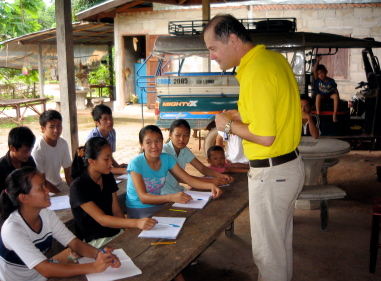
Nevertheless, out of habit and a sense of masochistic tradition, I kept on asking around for funds for my noncommercial huge English-Basque dictionary. I went about to the Basque Government. As I had expected, no one seem interested. I approached the Provincial Governments of Gipuzkoa and Biscay but they referred me back to the Basque Government. I continued to go back to the Basque Government but was, like before, rebuffed. Ultimately, in a final meeting, I was told that dictionaries are absolutely not a priority for them. They did not support them, period. I was then invited to approach Basque banks for my project.
Before doing that, I approached Aitor Esteban, an EAJ-PNV MP in the Spanish Parliament and a veritable euskaltzale, a can-do, no-BS man of action. The difference between him and the mostly Gipuzkoans I have dealt with was enormous. He is from Bizkaia and Bizkaians, in my experience, are generally more dynamic than Gipuzkoans. He looked at what I was aiming for and was visibly impressed. He replied that it was a very important thing for Basque and told me “nire kontu”. I had heard that before but I was hopeful. Two weeks later, he had talked to other MPs and the project, amazingly enough, passed unanimously in the Spanish Parliament. I had a tidy sum for the project and 5 years to make the definitive English-Basque dictionary.
There was muted criticism on COPE, the ultranationalist Spanish network who asked, reasonably, why the Basques couldn’t have come up with the money themselves. The project was mentioned, without objection, in the Spanish press such as La Razón, El Mundo, and ABC. I was taken aback by this. The project was prominently mentioned in the Diario Vasco and Correo but, shockingly enough, it was completely ignored in other papers such as Gara and Berria or the local Kosta-Urola paper, Hitza. Not one word was ever mentioned about it despite the fact that they claim to love Basque and are anxious to report on all aspects of the language. That was very, very hurtful to me since I love Basque so much but their thunderous silence spoke volumes.
Despite this, everybody seemed to know about it, including the people who refused to report on it. I was congratulated by “normal” people but no one in the Euskalgintza even uttered a world about it. In fact, quite the opposite happened. The Elkar people stormed off to have a meeting with Aitor Esteban and others to protest. However, it all blew over. Nevertheless, on account of petty politics, the initial sum was halved and the time to do it in was cut down to just a year. A seemingly impossible task but I am trying to get it done. I am eternally grateful to Aitor Esteban and, indeed, the Spanish Parliament. I will do my best not to let them down.
The dictionary, when completed, will be the largest bilingual Basque dictionary to date. It will have thousands and thousands of illustrative sentences. I suspect that it will be much too much for so many people in the Euskalgintza since most of them (at least those over 35) know little beyond basic English but it will gain ever greater importance as younger Basques grow up and become more familiar with English, which is gradually supplanting Spanish as THE language of knowledge (though, of course, not as the language of everyday life) and is THE lingua franca of the European Community. Finally, it will be possible for Basques to look outside Spanish, or French, and see how things can be expressed in other languages. That is, indeed, a very revolutionary milestone in the evolution of Basque culture.
Now I truly understand what Placido Mugica meant when he wrote in his dictionary “Ezina Ekinaz Egina” for which I found the English equivalent “Have at it and have it”.
BBP: Do you feel that the Basque government is on the right track towards promoting Basque?
Mikel Morris: This is a very difficult question and everybody has their standard, canned, “thinking-within-the-box” answer, depending on their political ideology. To understand whether the right policy is being applied, one should first take a look at how different groups within the Basque Country see how Basque should be treated.
Those favoring the status quo (considered by some as “pro-Spanish” or “españolistas” or “constitutionalists” by others; I shall allow the reader to insert his or her adjective) say that the Basque government is actually going too far. They claim that Basque is being “imposed” upon an unresponsive, indifferent, mostly Spanish-speaking populace. They maintain that if Basque is forced down people’s throats, they will grow to resent it, even hate it. The more moderate wing of this line of thinking contend that things should be done gradually. Spanish-speakers should be encouraged, indeed, even invited to learn Basque.
The more radical viewpoint maintains that, according to the 1978 Spanish constitution, article three, Spanish citizens are obliged to know Spanish while they only have the right to know “regional languages”. Many of those adamantly opposed to making Basque really official in the full sense of the word say that monolingual Spanish speakers are discriminated against because all Basque-speakers know Spanish. I really don’t believe that those who hold the radical view that Basque should not enjoy full official status are Basque language haters. They all claim it should be preserved, but they would prefer it to be confined to the farm. Basque place names are all right by them provided that the Spanish one is first and the Basque name is written in that cute Basque font. In a word, they believe that Basque should be folkloric, heraldic, cute, rural, and quaint. It has no place in the modern real world. The French have done a good job on its regional languages in that way and Spanish nationalists look upon them with great envy.
It is their contention that by promoting Basque in all spheres, people from other parts of Spain, indeed, people from the Basque Country who speak no Basque, are discriminated against on account of the language they don’t speak. They contend that Spain is a nation of citizens and by promoting Basque, Spanish monolinguals suffer. In fact, some even believe that it is a dirty ploy to stack the bureaucracy with Basque nationalists since a very large part, though not all, of the pro-status quo parties in the Basque Country speak only Spanish.
Basque nationalists have another point of view. They contend that Basque was savagely discriminated against not only during the Franco years but also down through the centuries. Basque was prohibited in the Biscay assemblies as far back as the 1700’s. Basque was never allowed in schools. The only way to save Basque, in their opinion, is to favor a kind of affirmative action program aimed at bringing Basque to true equality, on par with Spanish in every aspect of life, be it public or private.
The great problem with that is that they don’t really believe it. Basque is now spoken, or at least known, by close to 35% of the Basque Autonomous Community (it differs in the other two political realities where Basque is spoken, Iparralde and Navarre), depending on how you define knowing Basque. Basque-speakers are so used to their diglossic status that they really cannot imagine being able to live their lives in Basque as Spanish-speakers are able to do so in Spanish (or French in Iparralde). Most Basque-speakers have a better handle on Spanish than Basque when it comes to working with it, when it is a question of vocabulary. Few Basques seem to know how to say “velvet” or “oats” or “knuckles” in Basque while they are perfectly able to do so in Spanish. This explains why Basques tend to tell jokes in Spanish rather than Basque.
Further proof that Basques don’t believe in their empty rhetoric may be seen in politics. Spanish is by far the most used language in the Basque Parliament. Basque is used far less then the 35% of the populace who are said to speak it. There are fervent Basque nationalists in the Parliament who wax lyrical about Basque, who vote on increasing the usage of Basque in education and even in government while they themselves are often quite unable to do so likewise. This blatant hypocrisy is what makes Spanish monoglots absolutely furious, even suspicious of the motives. As I said above, look at the nationalist press, Deia and Gara, which are mostly in Spanish. I will believe in their sincerity when we have newspapers entitled “La Llamada” and “Somos” with token Spanish with the rest in Basque.
The overall problem is that, for Basque to be present in every sphere, it means that Spanish must lose its absolute monopoly on all spheres of public use. That is where the rub is for the linguistically challenged “erdaldunak”, most of whom know only Spanish, not even English. They simply cannot understand why the monopoly of Spanish in every sphere (i.e. mass communication, law, pop culture, education, etc.) should not go on forever especially when they are convinced that the Spanish language is “unstoppable” in the world (although it is hardly used outside of Latin America and Spain, the official language in only one dinky, insignificant country in Africa and has practically disappeared in Asia).
In view of how different political groups view Basque and how they actually use it, the Basque Government has its hands tied. How can you copy Catalonia where even PP parliamentarians generally speak in the Parliament in Catalan? How can they copy Catalonia when even nationalists do not have a handle on Basque in the same way that CiU and Esquerra Republicana parliamentarians do on Catalan? I recall that Aralar negotiators were shocked to find that when they wanted to negotiate with the rabidly pro-independence Eusko Alkartasuna party, they had to do it in Spanish because the party’s negotiators knew no Basque. Mind-blowing hypocrisy. It was one of the reasons why nothing came out of said negotiations.
There is now some controversy going on in the Basque Country since the Basque Government, now, is drifting towards the “immersió” program that was first forged in Catalonia. There are now proposals to make Basque a working language rather than a language of translation in government. I personally welcome this but there should be efforts to make Basque the working language in nationalist organizations first. When I see Gara and Deia largely in Basque, I will start to believe their sincerity.
In the meantime, it is my humble opinion that the Basque Government, overall, throws money at the problem though it does not really have a smart plan. Plans, they have. Plans galore. Plan in industrial quantities. Basques are big on “plangintza” (planning). They have plangintzas for everything. Yet, no one seems to explain why nothing is being done in making Basque a normal language. They have normalizazio programs but international bestsellers rarely appear in Basque in “real time”. Is there a Da Vinci Code in Basque? There are the Harry Potter books, but why do they always seem to appear way after the French and Spanish translations?
There is no version for Basque on Apple computers but there sure are versions in Icelandic and Catalan. I have had to fight to get a decent English-Basque dictionary but it was the Spanish Parliament that came through for me thanks to an intervention by the forward-thinking EAJ-PNV parliamentarian Aitor Esteban. The Basque Government was never interested in such a project. They turned down the project several times. Amazing.
If Basque culture actually functioned as it should, they should have bent over backwards to facilitate projects such as mine. Basque needs a base, an intellectual infrastructure on par with other modern languages. Why is there no Latin-Basque dictionary? Greek-Basque dictionary? Indeed, why isn’t the Euskaltzaindia’s dictionary entirely in Basque? The Basque government is perhaps representative of this fudge factoring in the Basque mindset. It is also tragic that there are no private foundations in the Basque Country that promote the Basque culture in the same way that rich individuals promote and have promoted Catalan in Catalonia.
The Basque government prefers the bureaucratic and vertical approach to developing Basque. They are not creative nor could they ever be. They support various Basque magazines and book translations but why, oh why, are there no magazines like Muy Interesante in Basque? Why are there no stupid magazines along the lines of Seventeen or National Enquirer (or Hola in Spanish?). Why are there no car magazines or fashion magazines or sports newspapers in Basque? Why isn’t the Basque version of Wikipedia not promoted systematically? They are happy that there are 25,000 or 30,000 articles in the Basque version when there are nearly 400,000 in Spanish (English has over 2,000,000). That is what should be fomented if we want Basque to be a normal language. Interesting Basque-language materials should be available to cerebral intellectuals, political junkies as well as airheads crazy about Paris Hilton or sports maniacs who only live for football. And if they wish to read Danielle Steel in Basque, not just Victor Hugo or Cesare Pavese, why not?
The true salvation of Basque might just be impossible because it would call for a monumental rethink and thinking is not the Basque establishment’s forte. In the meantime, what are they doing? Teaching Basque to reluctant teachers and bureaucrats, funding a largely ignored, largely folkloric ETB 1, and providing some grants for various projects. The most visible thing that that they have is Euskararen Eguna and they have even created a cartoon character called “the Ukan virus” (Ukan is “have” and typically learnt by euskaldunberriak). This “virus” is to infect erdaldunak with enthusiasm for learning and using Basque. I kid you not, they have really promoted this.
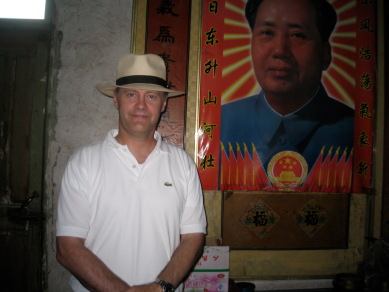
I would propose that rather than infect Erdalduns with the “Ukan virus”, they should remove the “Edukirik ez” (content free) virus from Basque culture. By that I mean they should not only have festivals that celebrate the existence of Basque but actually promote creation in Basque by coming up with the materials I mentioned above and bring in an “East German” style program of spotting creative talent (e.g. writing, visual arts) and then actively encourage it, stimulate it, fund it lavishly. The common view in the street here is that things in Basque are wooden, stilted, boring and boorish. That is not always true but that is the perception in the street. If Basque-speakers think that, what is the motivation for Spanish-speakers to learn it, especially if Basque-speakers are so eager to speak Spanish anyway? If there is genuine creation in Basque then Basque culture will be genuinely attractive not only for non-Basques but to Basques themselves.
In writing what I have written, I have most likely made even more enemies for myself but I am increasingly indifferent to that. I really no longer care. I love Basque very much but many Basques’ attitudes have greatly discouraged me. That is one reason why Chinese and Thai seem so very appealing to me now.


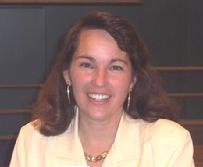
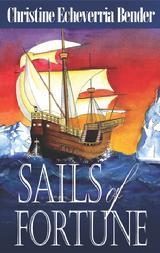


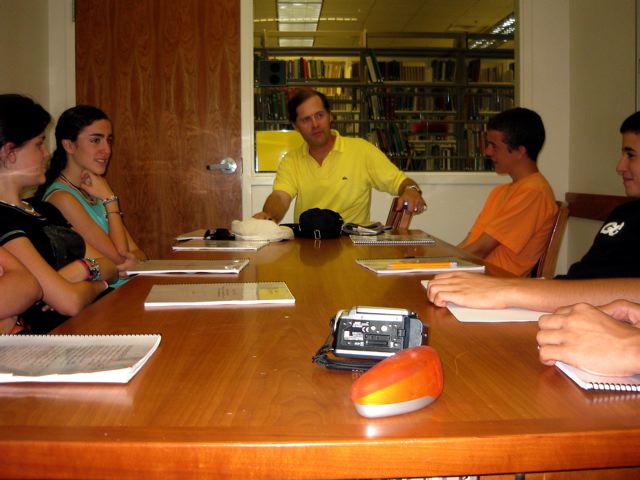 BBP: You also previously mentioned that there were no posts were on offer at a university in the Basque Country after your dictionary was published. Didn’t you actually teach once at the University of the Basque Country?
BBP: You also previously mentioned that there were no posts were on offer at a university in the Basque Country after your dictionary was published. Didn’t you actually teach once at the University of the Basque Country? BBP: Do you see any future for Euskara?
BBP: Do you see any future for Euskara? 